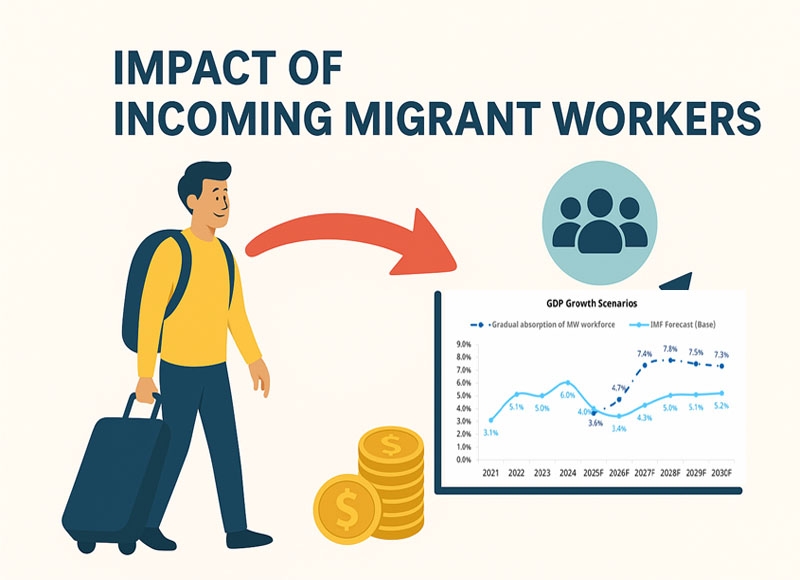From Remittances to Resilience: Harnessing Returning Migrant Workers for Cambodia’s Growth

• Cambodia stands at a pivotal economic crossroads. The recent border conflict with Thailand has not only strained bilateral relations but also triggered a reversal of long-standing migration flows, with more than 750,000 Cambodian migrants returning home since the clashes broke out on July 24, 2025. For decades, remittances from Cambodian workers in Thailand— averaging more than $1.5 billion annually—have been a cornerstone of rural household income and a stabilizing source of national consumption. Their sudden decline, an estimated 1–2% of GDP, represents a sharp short-term shock with broad implications for livelihoods, small enterprises, and fiscal stability.
• Yet, beneath this immediate challenge lies a transformative opportunity. The large-scale return of migrant workers (MWs) presents Cambodia with an additional labor force that, if effectively absorbed, could generate sustained and domestically driven economic growth. This is not impossible. On August 1, 2025, the Ministry of Labor and Vocational Training announced the availability of more than 250,000 jobs across the country in various factories experiencing a labor shortage. Unlike remittance inflows, which indirectly supported consumption, the integration of the returning MWs into the domestic economy creates dual growth channels: direct Gross Value Added (GVA) through production and a multiplier-driven boost through household consumption.
• Our analysis shows that, with gradual absorption of returning MWs into the labor market, GDP contributions could scale from marginally negative in 2025 to strongly positive by 2027 and have the potential to reach the pre COVID growth levels. This marks a structural shift—from dependence on external remittances toward self-reliant, broad-based economic expansion. If supported by targeted investment, sector-specific job creation, and strengthened domestic value chains, the reintegration of MWs could catalyze Cambodia’s transition to a more resilient and diversified growth model.
